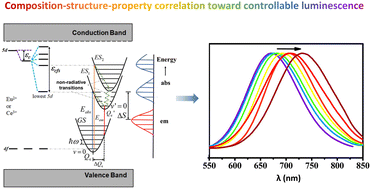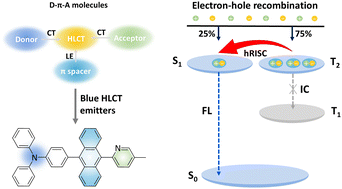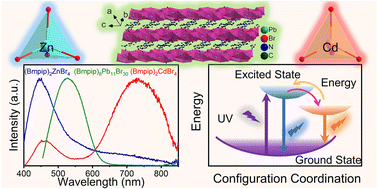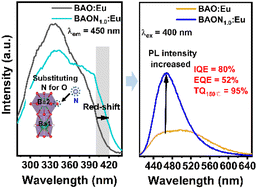Dalton Trans., 2023,52, 9368-9376, https://doi.org/10.1039/D3DT01209C

Mixing cations with different chemical properties to induce the generation of asymmetric structures is a new approach for tuning the optical properties of hybrid organic–inorganic metal halides (HOIMHs). In this study, zero-dimensional (C9N3H15)(C9H13SO)MBr6 (M = Bi/Sb, [C9N3H15]2+ = [(C4N2H10)(C5NH5)]2+ and [C9H14SO]+ = [CH3(C6H4)OS(CH3)2]+) are synthesized. Two different cations cause both compounds to crystallize in the polar space group P212121, thus resulting in significant phase matchable second harmonic generation under a 1064 nm laser excitation. Thus, (C9N3H15)(C9H13SO)BiBr6 and (C9N3H15)(C9H13SO)SbBr6 exhibit intensities that are approximately 1.8 and 1.7 times that of KH2PO4, respectively. The results of density functional theory calculations show that both (C9N3H15)(C9H13SO)BiBr6 and (C9N3H15)(C9H13SO)SbBr6 exhibit direct bandgaps of 2.95 and 2.81 eV, respectively. Additionally, because of the distortion of the inorganic octahedra, (C9N3H15)(C9H13SO)SbBr6 exhibited bright yellow emission at room temperature, which is attributed to ns2 fluorescence emission. We believe that the symmetry of the HOIMH crystal structure can be broken by introducing spatially differentiated bifunctional organic cations, which consequently enables even-order nonlinear activities.




![[1 with combining macron]](https://www.rsc.org/images/entities/char_0031_0304.gif)



